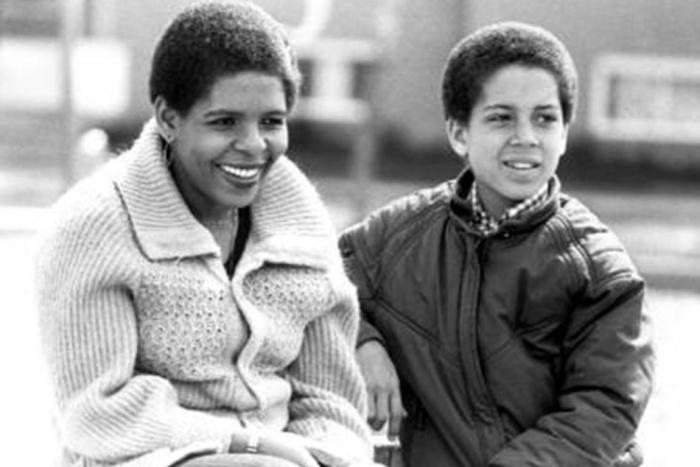Last February, a few months after Michael Zehaf-Bibeau killed one soldier in his attack on Parliament Hill and Martin Couture-Rouleau ran down two off-duty soldiers in Quebec, the RCMP announced it had prevented a mass shooting in Halifax, Nova Scotia. “Based on what we know so far, it would have been devastating,” Justice Minister Peter MacKay told reporters. “Mass casualties were a real possibility.”
Had the shooting occurred, would the perpetrators have been classified alongside Zehaf-Bibeau and Couture-Rouleau? The latter were Islamist sympathizers—in a pre-recorded video, Zehaf-Bibeau called himself one of the Mujaheddin and declared that he was acting “in retaliation for Afghanistan and because Harper wants to send his troops to Iraq.” Couture-Rouleau, who posted propaganda promoting jihad on his Facebook page, had attempted to travel to Turkey a few months earlier, allegedly so he could then enter Syria. As a result he had his passport revoked and was put on an RCMP watch list as a possible extremist. The Halifax shooters, meanwhile, apparently had murkier intentions. “The attack does not appear to have been culturally motivated, therefore not linked to terrorism,” MacKay said, even as he later described the would-be killers as a “group of murderous misfits that were coming here or were living here and prepared to wreak havoc and mayhem in our community.”
Such inconsistent or hesitant application of the term terrorism isn’t a post-9/11 phenomenon. In Inside Terrorism, Bruce Hoffman notes that in the 1970s, the label was often applied only to more lethal Palestinian strikes, while those that caused less bloodshed were deemed guerrilla attacks. Since the term was coined during Robespierre’s Reign of Terror, it has described attacks carried out against governments as well as violence meted out abusively by oppressive states.
Today we’re familiar mostly with the first notion and, within that, are living in the era of lone wolves. Zehaf-Bibeau and Couture-Rouleau fit into this category, as do Dzhokhar and Tamerlan Tsarnaev, the Boston Marathon bombers—all men who, unlike those responsible for attacks like 9/11, were inspired by, but not directly affiliated with, militant or political organizations. In this context, the decision to use the word “terrorism” can often seem arbitrary and, in the worst cases, racist. After Craig Stephen Hicks, a white man, shot and killed three Muslim students in Chapel Hill, North Carolina, Glenn Greenwald tweeted: “All media coverage about Chapel Hill asks: 'is this a “hate crime”’? The word ‘terrorism’ never mentioned: for obvious reasons.” According to prosecutors in the case, Hicks later confessed to the murders, claiming they resulted from a prolonged dispute over a parking spot. The family of the victims continue to assert that religion got the students killed, but ultimately all that could result from an FBI inquiry into the matter is just what Greenwald might scoff at: a hate-crime charge.
Where we draw the line between murder and terrorism is more than a legal question. (Though it is also that; in the U.S., a person can face a much harsher prison sentence if their crime was committed in service of a terrorist act.) Which term we use determines what questions we ask following an attack or shooting. It establishes whether the subsequent discussion of motivations will consider mental illness, class, social standing, and even parking disputes—factors through which we try to understand the attacker and touch on weaknesses in our society—or if it will become polarized, with anyone grouped alongside the dead classified as victims, and those who resemble the attackers deemed the enemy. In the face of that choice we might wonder not what constitutes terrorism but what we gain from classifying any mass murders under that name at all. Increasingly the word carries the unfortunate distinction of seeming both useless and dangerous.
*
Zehaf-Bibeau, Couture-Rouleau, and the Tsarnaev brothers all drew inspiration from Islamic fundamentalism, but the deadliest lone wolf in recent history is the Norwegian anti-immigrant right-wing extremist Anders Breivik, who, on July 22, 2011, planted a bomb outside a government building in Oslo, killing eight bystanders, before driving to a nearby island and murdering 69 people, mostly teenagers, who were attending a yearly camp organized for the youth wing of the ruling, leftist Labour party.
Lone wolves arise from among us, seemingly out of the blue. One or two people, compelled to horrific acts of individual violence. Their attacks intensify our frantic search for reasons—for the source of radicalization, as those working in national security might put it—because they seem to make a simpler case study. But books like Asne Seierstad’s One of Us and Masha Gessen’s The Brothers, which retrace the lives of Breivik and the Tsarnaevs respectively, cast doubt on the validity of any overarching theory we might come up with to explain the actions of these men. Both books address what might have been done to prevent the shootings and bombings, but they also point to a more frightening truth: that each attack will always be marked by something particular, something unknowable, something unpredictable.
Evil acts have their confluences, but are singular as well, born of a particular time and place, their effect felt by particular individuals. The concept of terrorism does justice to neither of these facts, offering only feigned justice for victims by placing them into the context of a larger war, falsely providing their deaths a grander purpose when in fact it’s the senselessness of their fates that is most tragic.
As the title evokes, One of Us—a remarkable book of reporting, testimony, investigation, social commentary, and remembrance that has just been published in an English translation—puts Breivik’s life in a social context. Seierstad doesn’t separate Breivik’s actions from Norway’s larger culture; rather, she tries to better understand them by seeing how Breivik became excluded from and repelled by Norway’s progressive liberal democracy.
Breivik’s life story unfolds as a series of failed attempts to find a place in the world. In high school, he tries his hand as a graffiti artist, at which point he idolizes foreigners because their gangs are “rougher round the edges and tougher than those of the Norwegian kids.” But Anders’ friends ultimately reject him. He gets labeled uncool for, among other things, the sin of wearing a style of briefly fashionable jeans “just a bit too long.” Later in life Anders becomes a member of the right-wing Progress Party, an avid World of Warcraft player, and even a Freemason. In all these endeavours, Seierstad finds a pattern: Breivik is driven to lead, to be part of the elite, but his arrogance always gets him rejected. As Seierstad summarizes at one point, using Norwegian slang that demarcates great graffiti artists from the beginners and pretenders, “he was behaving as a king, but he was only a toy.”
It’s impossible to read these and other passages in One of Us without noting the opportunities to avoid the impending carnage, the hints of Breivik’s future violent behaviour. The book in some ways illustrates the natural impulse for explanations that former U.S. Secretary of Homeland Security Janet Napolitano describes in her review of The Brothers:“When we understand better what causes young men like Tamerlan and Dzhokhar to commit such acts, we will know better how to prevent them.”
But a central takeaway from One of Us is also that, no matter how detailed the profile, there will always be a missing step in the equation. The problem is highlighted further when you read One of Us alongside The Brothers. Breivik and the Tsarnaevs share traits that you might cross-reference in a description of a terrorist. There’s a disconnection from society, a failure to jump-start a career, a desire to be noticed and admired.
But while evil acts have their confluences, they’re singular as well, born of a particular time and place, their effect felt by particular individuals. The concept of terrorism does justice to neither of these facts. It offers only feigned justice for victims by placing them into the context of a larger war, falsely providing their deaths a grander purpose when in fact it’s the senselessness of their fates that is most tragic. Most of all, it obscures much of what might drive people to such horrific acts.
It does the latter by immediately limiting the conversations we hold about the perpetrators. In The Brothers, Gessen points out that shortly before being killed in a confrontation with police, Tamerlan apparently referred to himself as a “Muslim American.” But the second part of that identity was largely ignored in the aftermath of the bombings. Once the Tsarnaevs’ “small story” joined “the large story of the War on Terror,” they became aliens. Their immigrant experience, their family’s dislocation, and the rootlessness of their identity became side conversations. What became central was when and how the two were radicalized, a discussion that also conveniently shifted the focus away from the U.S. to Tamerlan’s trip to Dagestan, his mother’s home country.
Of course, it’s not the word “terrorist” that’s the problem but the perspective one brings to it. In One of Us, Seierstad calls Breivik’s attack a terrorist act and examines his fanaticism. But she also considers whether he was mentally ill, as prosecutors argued during his trial, and thus unaccountable for his actions. (He was ultimately found accountable.) Her book suggests that both inquiries are valid; both offer partial explanations, so long as you push past the labels to the particulars of his life and experience. At one point she quotes Ulrik Fredrik Malt, a professor of psychiatry who testified at Breivik’s trial: “We have here not only a right-wing extremist bastard but also a fellow human being who, regardless of what he has done to the rest of us, is suffering.” Meanwhile, when Justin Trudeau, following the Boston Marathon bombings, suggested we remain open to the Tsarnaevs’ states of mind—“we have to look at the root causes,” he said. “We don’t know now if it was terrorism or a single crazy or a domestic issue or a foreign issue”—he was roundly decried for his insensitivity.
What’s at issue here isn’t our empathy with villains or our sympathy for victims. It’s the manner in which we as a society choose to confront the implications of extremism. In One of Us we glimpse a country defined by open immigration policies and social democracy reacting to terrorism in a way that doesn’t merely reaffirm its project but looks back at it, sees where people were left out, and questions its deficiencies. The author knows that the true judgment of a society is determined by considering those who most thoroughly reject it.
The Brothers, meanwhile, reflects a country that has turned cynical, distrustful, and divided from its fight against terrorism. The book includes a prolonged assessment of the various conspiracy theories that arose after the Marathon bombings positing government or FBI involvement in the attacks, theories particularly expressed by Chechens who became suspects only because they shared a heritage with the Tsarnaev brothers. “People were starting to point out some inconsistencies in the FBI’s story,” Gessen writes, “but even more, the ongoing siege of the Chechen community made it feel like they were the ones under attack.”
The reaction against the Chechens, Gessen points out, was another instance of American society isolating itself in response to terrorism, targeting aliens and reaffirming the notion that “terrorists are larger than life and have America under siege.” The Brothers ends pointedly in this respect with Gessen meeting Luis Vasquez, a high school friend of Tamerlan’s who was being interviewed on CNN when Dzhokhar was captured. Vasquez nostalgically recalls hearing the crowds around him on that day start to chant, “U.S.A! U.S.A!” “This was not only his moment of glory,” Gessen writes, “but, in the fervor of all those chanting people, the glory of his time, his place, his country, the vastness of all that it stood for, against the vastness of all that threatened it.”
This nationalistic emotion may amount to a show of strength in reaction to a moment of weakness and victimhood, but the polarity that it creates is, strikingly, not so different from how Seierstad describes the appeal of anti-immigrant, anti-Muslim ideology for Breivik. That community, she writes, offered Breivik a “strong sense of solidarity, of ‘us.’ It’s us against the interlopers. Us as a group under threat. Us as the chosen people. Us against them. Us against your lot.”
*
In a 1911 article, Leon Trotsky argued, “the most important psychological source of terrorism is always the feeling of revenge in search of an outlet.” 11He also benefited from the loose definition of terrorism. After deeming the tactic “striking in its outward form (murder, explosions and so forth) but absolutely harmless as far as the social system goes” he would later, according to Robert Service’s biography, justify the Bolsheviks’ persecution of their enemies by saying, “we too stood for terror but for mass terror realized by the revolutionary class.” Today, that enmity increasingly defines our response to terrorism as well. The shift begins when we start debating if an attack counts as a terrorist act, since the question implies a fork in the road: on the one hand, toward seeing the event as another battle in a war waged against us; on the other, toward a broader set of questions and a deeper self-reflection.
The problem extends beyond our reaction to extremism as well. In a recent talk on diversity, faith, and extremism, the writer Kenan Malik lamented the disregard many Westerners have for the multiplicity of Muslim identity. In France, he argued, second-generation immigrants of North African descent are seen “not as French but as ‘Arab’ or as ‘Muslim.’” This alienation, he continued, can’t be separated from the appeal of ISIS, al Qaeda, and other extremist groups. “Caught between a society that sees them only as Muslim, and their own alienation from mainstream Islamic organizations, some get drawn to Islamism”
Terrorism and our reaction to it inflates and catalyzes this social discord, but the real problem comes from its normalization, from our growing willingness to divide others into categories onto which aspersion and blame can be more easily cast. Here in Canada, we’re inching closer to this state of affairs, ever further from Norway’s model toward the U.S.’s. A bill like C-51 plays on the politics of fear and uses terrorism to create a new expansive notion of enemies of the state. It presents us with a stark and increasingly pressing choice, a last-ditch binary to prevent a binary existence: Today, we can make terms like “accommodation,” “openness,” and “freedom” signify something, or we can be defined by a word that means nothing at all.






